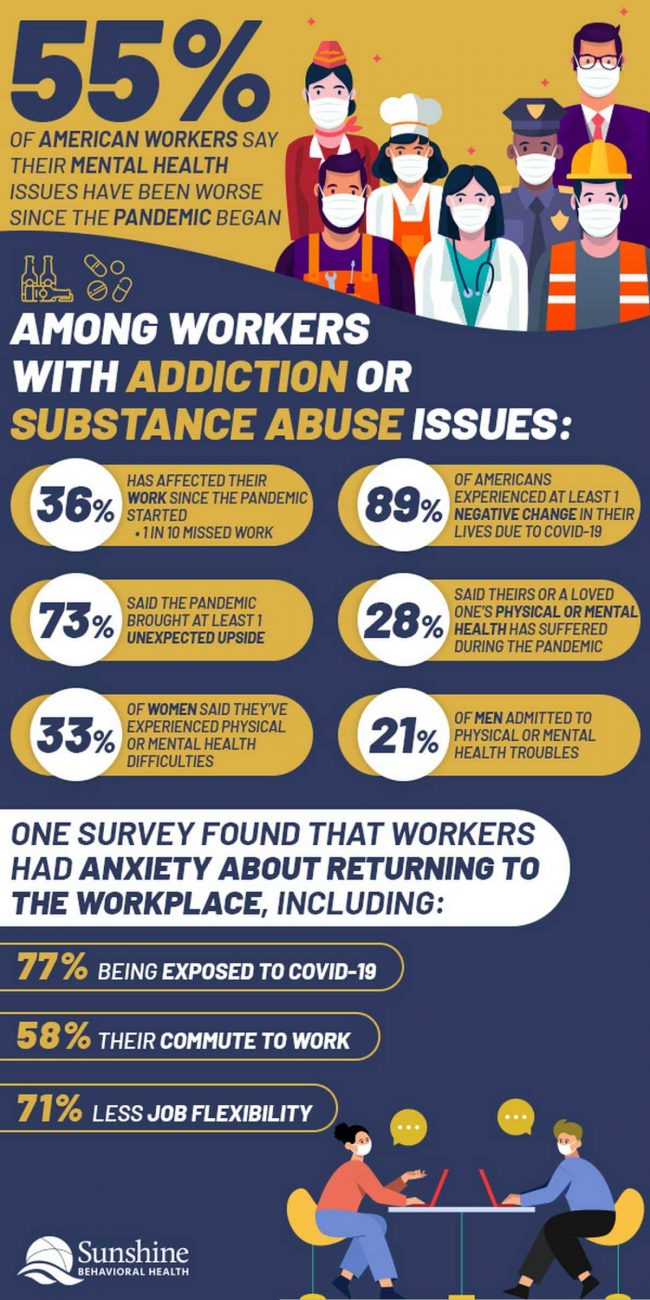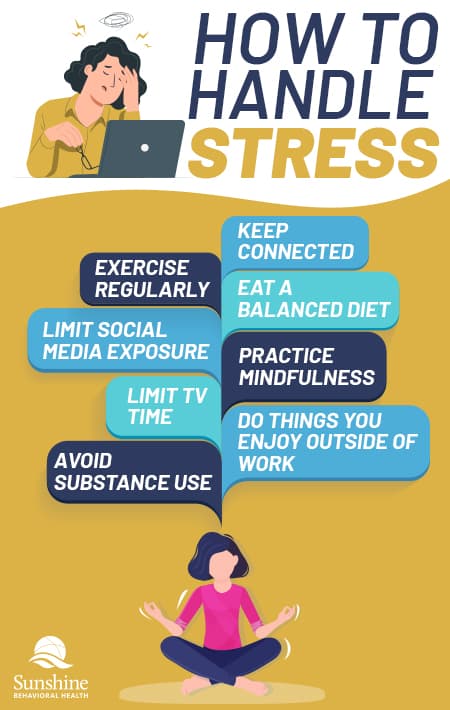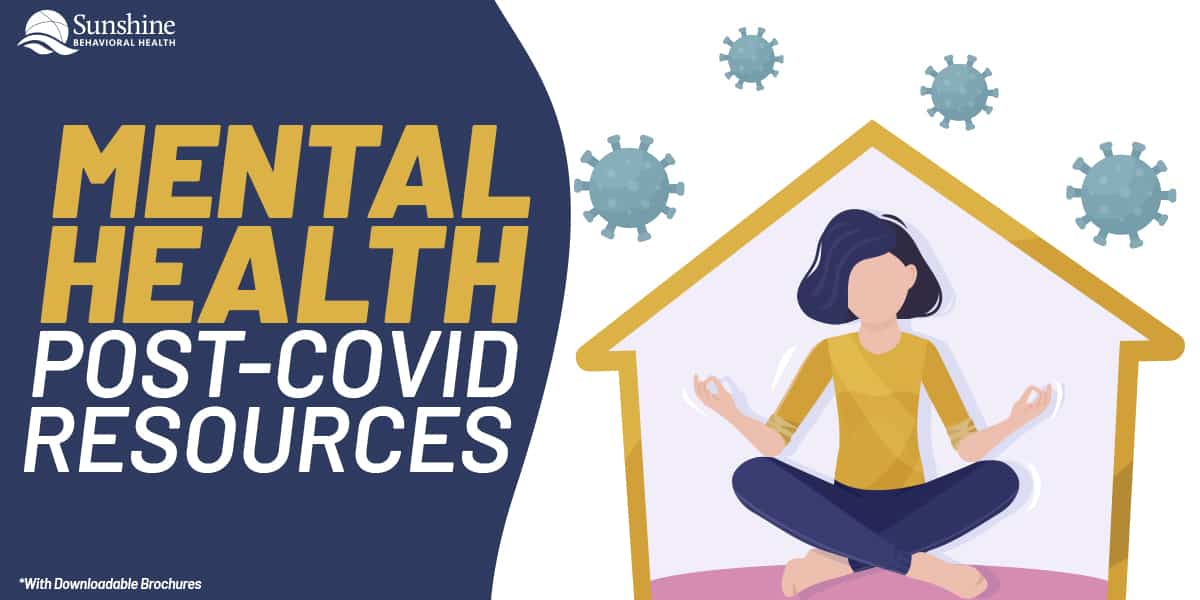Returning to “Normal” Guide Mental Health, Post-COVID
A lot has changed since the World Health Organization declared the outbreak of the novel coronavirus-caused COVID-19 a global pandemic on March 11, 2020. Since then COVID-19 has killed millions and sickened hundreds of millions around the world.
Lockdowns and safety measures have kept many of us out of the workplace or classroom for months or longer. That’s affected our mental health. For some, the isolation has fueled anxiety and depression. For others, the prospect of returning to the workplace is a major source of stress.
Americans started receiving COVID-19 vaccines in December 2020, with the most shots being administered in April 2021. As variants of the coronavirus have been emerging, hundreds of millions of vaccines have been administered throughout the United States and around the world.
Since the vaccines have appeared to reduce cases and deaths, life has in some respects and in some places has begun to return to normal.
Except where it hasn’t.
Mental Health
The pandemic has not only affected our physical health but our mental health, too. Throughout COVID-19 people struggled (and continue to struggle) with uncertainty, isolation, and grief.
One survey looked at the mental health of full-time American workers in the first months of the pandemic. Among its findings: the pandemic was not good for mental well-being. Before COVID-19, 39 percent of workers reported mental health issues. After the coronavirus hit, that number climbed to 46 percent.
More than half (55 percent) of respondents said since the pandemic started, their mental health problems have interfered with their work.
Mental health issues can lead to other problems, including co-occurring disorders, such as when mental illness and addiction coexist. Left untreated, such disorders can result in many long-term health problems, risky behaviors, and reduced work quality.
Struggling Day to Day
Addiction and substance use problems did not dwindle, either.
Drug overdose deaths were on the rise even in 2019, but they climbed considerably in 2020, particularly during the early months of the pandemic, according to the Centers for Disease Control and Prevention (CDC). Fear and despair may be factors, but since many treatments and support options were closed, limited, or moved online, that led some to relapse.
Nationwide alcohol sales also accelerated, by 54 percent in the early weeks of lockdowns. Alcohol consumption went up, too, by 14 percent from 2019 to 2020. The frequency of use also rose. Other findings include:
- One in 10 missed work or were less productive due to addiction or substance use disorder.
- 36% of those struggling with substance use disorder said it’s hurt their work even more since COVID-19.
- One-third said that a significant portion of their workday suffers when they also are grappling with mental health or substance use disorder problems.
Working from home is leading to other issues as well. Not everyone’s work-from-home stations are ergonomically sound. That can contribute to neck, shoulder, and back pain, leading to reduced efficiency, increases in sick days, worsening mood disorders, and dependence on pain medications.

COVID and Unemployment
Once the lockdowns began, the U.S. unemployment rate spiked up to 14.7 percent. That number has gone down since its peak — to 5.9 percent as of June 2021 — but it’s not back to pre-pandemic levels.
Minorities and women of color experienced higher unemployment rates (due in large part to more people of color working in service industries) and were hit harder by the pandemic in terms of death tolls. (Blacks, for example, have died due to COVID-19 at 1.4 times the rate of whites.)
Hiring slowed in early 2021 (even as more positions opened) as some found they didn’t want to return to the same jobs for the same pay. Lack of benefits kept others away. Some struggled with balancing childcare and work. Others were hesitant because they didn’t feel it was safe to return to normal.
Stimulus checks and enhanced unemployment checks were a lifeline for many, but for others, they provided an opportunity to rethink their next steps. Some are open to returning but don’t want to return to the office. One survey found 58% of respondents said they’d be sending out résumés if they weren’t allowed to work remotely.
Some people are returning to work. To the workplace, even. Some are eager, and others are experiencing stress over it.
Signs of Stress
Stress affects nearly everyone and can result from anything. The uncertainties of the pandemic (financial woes and health fears) supercharged it for a lot of people.
Merriam-Webster defines stress as “a physical, chemical, or emotional factor that causes bodily or mental tension.” While it’s normal to experience stress, too much can pose risks to both physical and mental health.
Common symptoms of stress include:
- Nervousness, anxiety
- Apathy, indifference
- Annoyance, irritation
- Sadness, depression
- Sleep troubles
- Struggling to concentrate
- Headaches, stomach troubles, skin rashes, and pain
Changes in appetite, personality, and appearance, and/or a lack of interest or difficulty in getting day-to-day things accomplished are also signs that stress is starting to take a toll.
Effects of Stress
The effects of stress are well-documented. (And while a tiny bit can be good, activating our fight-or-flight syndrome and helping us survive dangerous situations, a lot is bad for you.)
Apart from anxiety or headaches, stress can also lead to less visible (but even more troubling) problems such as high blood pressure and a diminished immune system. Mental health can take a hit, too, worsening conditions such as anxiety and depression.
It can’t always be avoided, but stress can to some extent be better managed. Mindset, preparation, and communication are three ways to approach workplace or classroom jitters. Some healthy routines can be helpful too.
Managing Everyday Stress
Accepting that stress is a part of our lives (to an extent) can help somewhat.
Maintaining a healthy daily routine is good for mental health. It’s a wise idea to focus on the things you can do, the things you can control. Making your bed and getting dressed every morning — these are day-to-day things a person can do that can make a difference in keeping up one’s spirits, especially if they’re still working or studying from home. Other tips include:
- Keep connected; reach out to others.
- Fit in regular exercise.
- Eat a balanced diet.
- Limit TV time or social media exposure.

- Stick to the facts and avoid misinformation and hysteria when it comes to the coronavirus.
- Do things to protect yourself and your loved ones. That can include getting vaccinated or wearing masks around groups of people.
- Relax and do things you enjoy outside of work (hiking, biking, reading, painting).
- Practice mindfulness: meditation or yoga can help with anxiety, depression, high blood pressure, and other issues.
- Avoid substance use; if you drink, practice moderation.
- Keep up with treatment if you have a physical or mental health condition.
Many people have returned to work, or will in the weeks and months to come. The pandemic is still evolving, however, so we don’t know the outcomes.
Make the Return to Work (or School) Less Stressful
Getting ready to return to the job or classroom (either as a teacher or student) can be stressful. Some folks have already returned so they’ve had time to adjust to an altered workspace.
Some may be coming back more than a year after shutdowns. In that time they haven’t had to deal with daily commutes, fears of exposure, social anxiety, or other concerns. After such a long time away, the prospect of facing those things and experiencing shifts in their routines may prove stressful.
Others may have enjoyed the flexibility of working from home and using online options as well as being able to opt out of social obligations, so they dread the getting-up-and-going-places portions of day-to-day life that they are resuming.
Additional sources of anxiety may include handling a different workload, career/job uncertainties, or juggling family and personal needs while holding down a job.
Either way, those are significant changes and that can feel overwhelming.
Focusing on controlling what you can, addressing what needs to be addressed, and accepting what is beyond your control can be helpful. Consider:
- Getting ready. Start setting a sleep schedule so you have extra time built in to get ready for work and the commute. Establishing a routine can add structure to the day. If possible, do a test run. Come into the office or classroom, reacquaint yourself, and prepare your workspace for your return.
- Realizing change is normal can help. Pandemic measures were meant to be temporary. Staying stuck in makeshift solutions can make it harder to transition. Understand that it may take a few hours, days, or even weeks to adapt.
- Understanding that anxiety is sometimes fueled by things out of your control. Sometimes it’s spurred by something you can’t predict and you fear the outcome may be negative. If you feel irritable or fearful or worried, take a moment to identify that. It won’t erase the problem, but acknowledging that it’s there can help.
- Returning to work is not without risks, but it’s fine to communicate to your employer what your concerns are. There may be room for compromise, perhaps with more social distancing or some flexibility in schedules. Wearing masks, frequent hand washing, cleaning regularly touched surfaces: These are things that can be controlled. Ideally, employers will also communicate with employees and ensure safety measures are met.
- Looking at the positives. Many people report that working from home resulted in longer days, as their duties stretched into evenings and weekends. Returning to the workplace or classroom may provide better barriers (with fewer distractions) between work and home that some may find helpful. It also may be a better way to be heard at work. Another positive might be seeing coworkers you like once again.
- Remembering that social interaction is good for the parts of our brains that govern learning and memory as well as decision making and socialization. Isolation and loneliness, however, can elevate the risk of cognitive decline and depression, especially among children, the elderly, and people with mental health issues.
Whether COVID-19 is eradicated one day remains unclear. One thing that is certain, however, is more pandemics will come. History has proven that. We may face shutdowns again, as well as the uncertainty, anxiety, and stress that follows. We can’t steer the outcomes, but we can take care of our mental health.
For anyone struggling with mental health issues, be it anxiety, depression, or thoughts of self-harm, there are many ways a person can find help. Calling a health care provider can be one way. So can reaching out to your primary care physician. If those aren’t options, below is a sampling of resources for finding help: Some employers have Employee Assistance Programs (EAP), too, which offer things such as free assessments, short-term counseling, referrals, and more for workers struggling with personal or work-linked problems. Human resources departments often have information on EAPs.Resources
Sources
Medical disclaimer:
Sunshine Behavioral Health strives to help people who are facing substance abuse, addiction, mental health disorders, or a combination of these conditions. It does this by providing compassionate care and evidence-based content that addresses health, treatment, and recovery.
Licensed medical professionals review material we publish on our site. The material is not a substitute for qualified medical diagnoses, treatment, or advice. It should not be used to replace the suggestions of your personal physician or other health care professionals.






